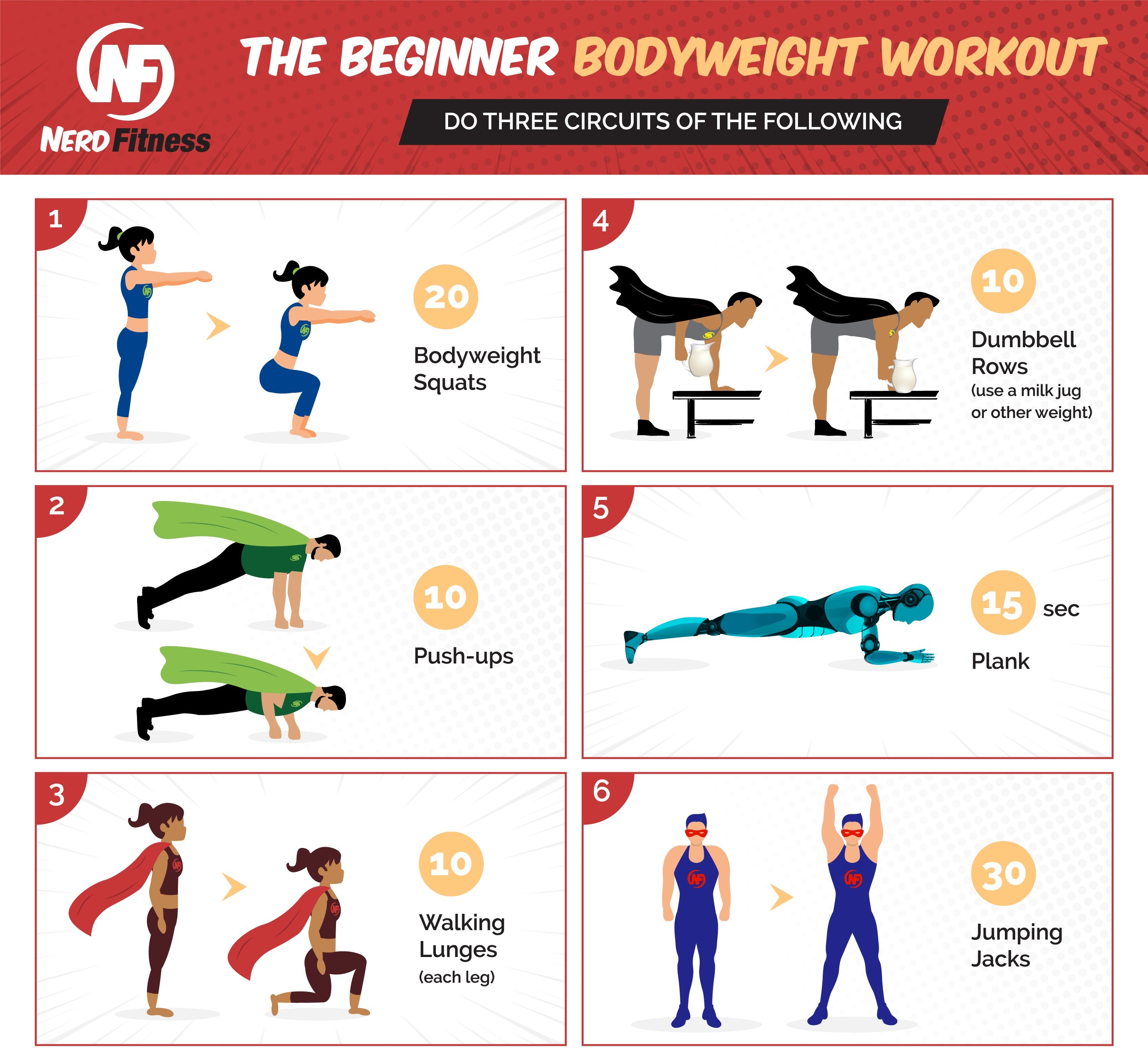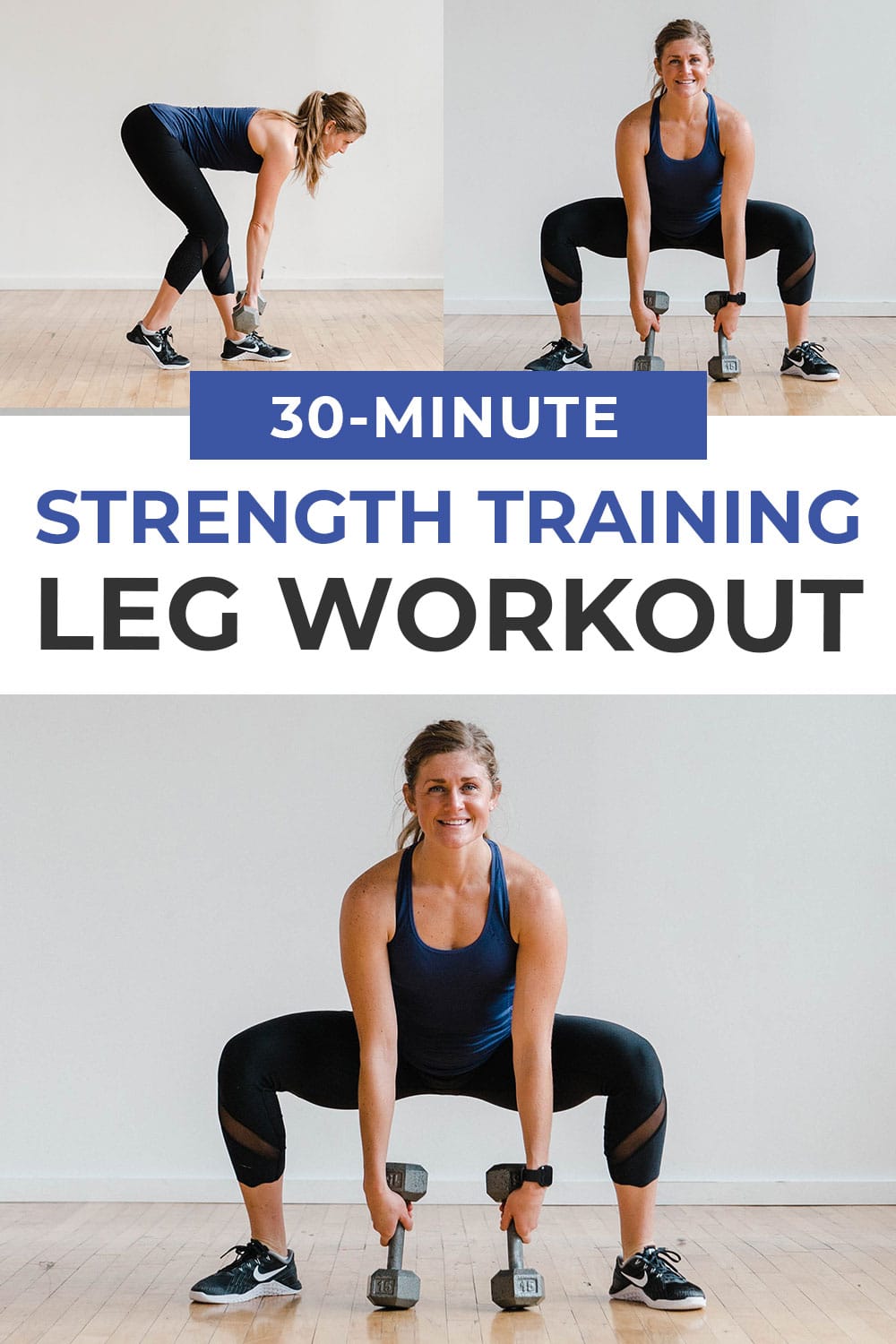“The Ultimate Guide to the Best Workouts for a Healthy Body
On this special occasion, we are delighted to explore the fascinating topic of The Ultimate Guide to the Best Workouts for a Healthy Body. Let’s weave together engaging insights and offer a fresh perspective to our readers.
About Video The Ultimate Guide to the Best Workouts for a Healthy Body
The Ultimate Guide to the Best Workouts for a Healthy Body

In today’s fast-paced world, prioritizing our health and well-being is more important than ever. Exercise is a cornerstone of a healthy lifestyle, offering a multitude of benefits that extend far beyond just physical appearance. Regular workouts can improve cardiovascular health, strengthen bones and muscles, boost mood, and even reduce the risk of chronic diseases.
However, with so many different types of workouts available, it can be overwhelming to know where to start. This guide will explore some of the best workouts for a healthy body, providing insights into their benefits, how to perform them correctly, and how to incorporate them into your routine.
Why Exercise Matters: The Comprehensive Benefits
Before diving into specific workouts, let’s first understand why exercise is so crucial for overall health:
- Cardiovascular Health: Exercise strengthens the heart muscle, improves circulation, and lowers blood pressure, reducing the risk of heart disease, stroke, and other cardiovascular problems.
- Weight Management: Exercise helps burn calories, increase metabolism, and build muscle mass, all of which contribute to weight loss or maintenance.
- Bone and Muscle Strength: Weight-bearing exercises stimulate bone growth and increase muscle mass, reducing the risk of osteoporosis and age-related muscle loss (sarcopenia).
- Mental Health: Exercise releases endorphins, which have mood-boosting effects. It can also reduce stress, anxiety, and symptoms of depression.
- Chronic Disease Prevention: Regular exercise can help prevent or manage chronic diseases such as type 2 diabetes, certain types of cancer, and arthritis.
- Improved Sleep: Exercise can improve sleep quality and duration, helping you feel more rested and energized.
- Increased Energy Levels: Regular physical activity can combat fatigue and increase overall energy levels.
- Enhanced Cognitive Function: Exercise has been shown to improve cognitive function, including memory, attention, and processing speed.

The Best Workouts for a Healthy Body: A Comprehensive Overview

Now, let’s explore some of the most effective workouts for achieving a healthy and well-rounded physique:
1. Cardiovascular Exercise (Cardio)
Cardio workouts are essential for improving heart health, burning calories, and boosting endurance. They involve activities that elevate your heart rate and breathing.
- Running: A classic cardio workout that can be done anywhere, running improves cardiovascular fitness, strengthens leg muscles, and burns a significant number of calories. Start with a brisk walk and gradually increase your pace and duration as your fitness improves.
- Swimming: A low-impact cardio workout that’s gentle on the joints, swimming is excellent for people of all ages and fitness levels. It works all major muscle groups and improves cardiovascular health.
- Cycling: Whether you prefer outdoor cycling or indoor cycling classes, cycling is a great way to improve cardiovascular fitness, strengthen leg muscles, and burn calories.
- Dancing: A fun and engaging cardio workout that improves coordination, balance, and cardiovascular health. Choose a style you enjoy, such as Zumba, hip-hop, or ballroom dancing.
- Jumping Rope: A simple yet effective cardio workout that improves coordination, agility, and cardiovascular fitness.

How to Incorporate Cardio:
- Aim for at least 150 minutes of moderate-intensity cardio or 75 minutes of vigorous-intensity cardio per week, as recommended by health organizations.
- Break up your cardio into shorter sessions if needed. For example, you could do three 10-minute sessions of brisk walking throughout the day.
- Choose activities you enjoy to make it more likely that you’ll stick with your routine.
- Gradually increase the intensity and duration of your workouts as your fitness improves.
2. Strength Training (Resistance Training)
Strength training involves using resistance to build muscle mass and strength. It’s crucial for maintaining bone density, improving metabolism, and enhancing overall physical function.
- Weightlifting: Using free weights (dumbbells, barbells) or weight machines to perform exercises that target specific muscle groups. Weightlifting is highly effective for building muscle mass and strength.
- Bodyweight Exercises: Using your own body weight as resistance to perform exercises such as push-ups, squats, lunges, planks, and pull-ups. Bodyweight exercises are convenient and can be done anywhere.
- Resistance Bands: Elastic bands that provide resistance during exercises. Resistance bands are portable, versatile, and can be used to target various muscle groups.
How to Incorporate Strength Training:
- Aim for at least two strength training sessions per week, working all major muscle groups (legs, back, chest, shoulders, arms, and core).
- Choose exercises that you can perform with good form and control.
- Start with lighter weights or resistance and gradually increase the weight or resistance as you get stronger.
- Allow your muscles to rest and recover between strength training sessions.
3. Flexibility and Mobility Exercises
Flexibility and mobility exercises improve the range of motion in your joints, reduce the risk of injury, and enhance overall physical performance.
- Stretching: Holding a muscle in a lengthened position to improve flexibility. Static stretching involves holding a stretch for 30 seconds, while dynamic stretching involves moving through a range of motion.
- Yoga: A mind-body practice that combines physical postures, breathing techniques, and meditation. Yoga improves flexibility, strength, balance, and mental well-being.
- Pilates: A system of exercises that focuses on strengthening the core muscles, improving posture, and increasing flexibility.
- Foam Rolling: Using a foam roller to massage muscles and release tension. Foam rolling can improve flexibility, reduce muscle soreness, and enhance recovery.
How to Incorporate Flexibility and Mobility Exercises:
- Stretch after each workout to improve flexibility and reduce muscle soreness.
- Incorporate yoga or Pilates into your routine once or twice a week.
- Use a foam roller to massage tight muscles as needed.
- Focus on improving flexibility in areas where you feel particularly stiff or limited.
4. Core Workouts
A strong core is essential for stability, balance, and overall physical function. Core workouts target the muscles in your abdomen, back, and pelvis.
- Planks: Holding a push-up position with your forearms on the ground. Planks strengthen the core muscles and improve posture.
- Crunches: A classic abdominal exercise that targets the rectus abdominis muscle.
- Russian Twists: Sitting on the ground with your knees bent and twisting your torso from side to side while holding a weight or medicine ball. Russian twists target the oblique muscles.
- Leg Raises: Lying on your back and lifting your legs towards the ceiling. Leg raises target the lower abdominal muscles.
- Bird Dog: Starting on your hands and knees and extending one arm forward and the opposite leg backward. Bird dogs improve core stability and balance.
How to Incorporate Core Workouts:
- Include core exercises in your routine at least two or three times per week.
- Focus on maintaining good form and control throughout each exercise.
- Gradually increase the difficulty of the exercises as your core gets stronger.
5. High-Intensity Interval Training (HIIT)
HIIT involves short bursts of intense exercise followed by brief recovery periods. It’s an efficient way to burn calories, improve cardiovascular fitness, and boost metabolism.
- Sprints: Running at maximum speed for a short distance, followed by a recovery period.
- Burpees: A full-body exercise that combines a squat, push-up, and jump.
- Jumping Jacks: A classic cardio exercise that involves jumping with your legs apart and arms overhead.
- Mountain Climbers: Starting in a plank position and alternating bringing your knees towards your chest.
How to Incorporate HIIT:
- Start with shorter intervals and longer recovery periods.
- Gradually increase the intensity and duration of the intervals and decrease the recovery periods as your fitness improves.
- Limit HIIT workouts to two or three times per week to avoid overtraining.
Creating a Well-Rounded Workout Routine
To maximize the benefits of exercise, it’s essential to create a well-rounded workout routine that incorporates a variety of activities. Here are some tips for creating an effective routine:
- Set Realistic Goals: Start with small, achievable goals and gradually increase the intensity and duration of your workouts as you get fitter.
- Choose Activities You Enjoy: You’re more likely to stick with a routine if you enjoy the activities you’re doing.
- Vary Your Workouts: Mixing up your workouts can prevent boredom and challenge your body in different ways.
- Listen to Your Body: Pay attention to your body’s signals and rest when you need to.
- Stay Consistent: Consistency is key to achieving long-term results. Aim to exercise regularly, even if it’s just for a short period of time.
Conclusion
Exercise is a vital component of a healthy lifestyle, offering numerous physical and mental health benefits. By incorporating a variety of workouts into your routine, you can improve your cardiovascular health, build strength, increase flexibility, and enhance overall well-being. Remember to set realistic goals, choose activities you enjoy, and listen to your body. With consistency and dedication, you can achieve a healthy and fulfilling life through exercise.

